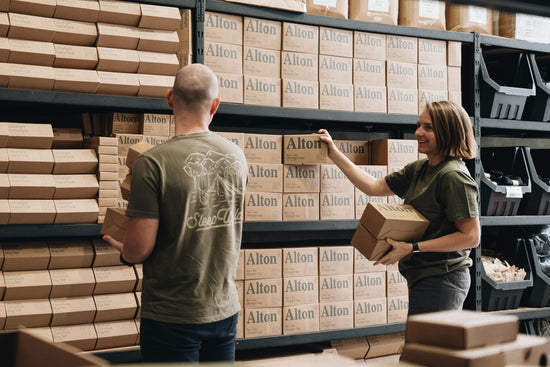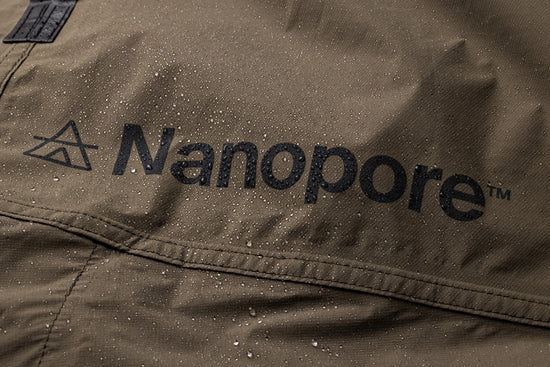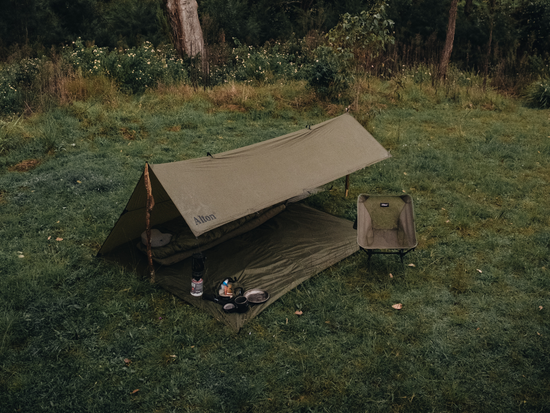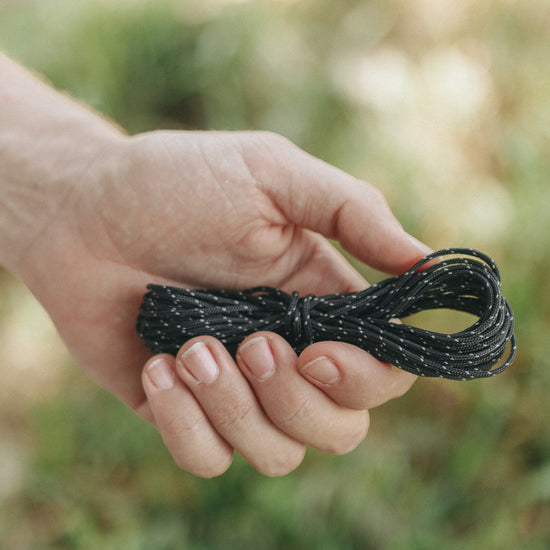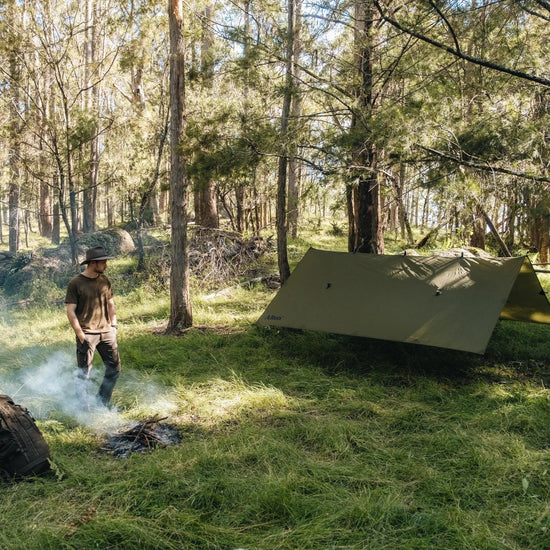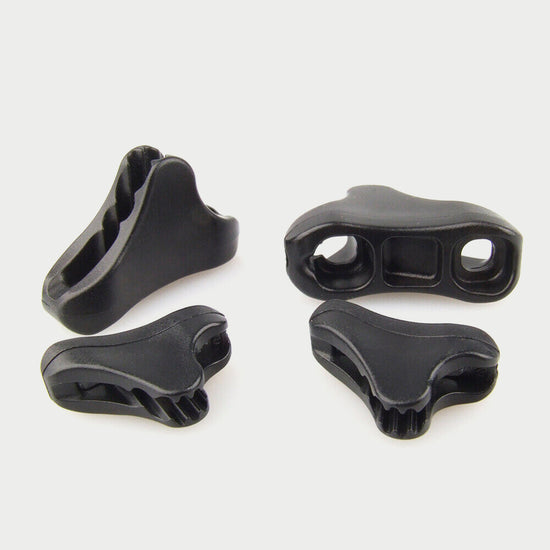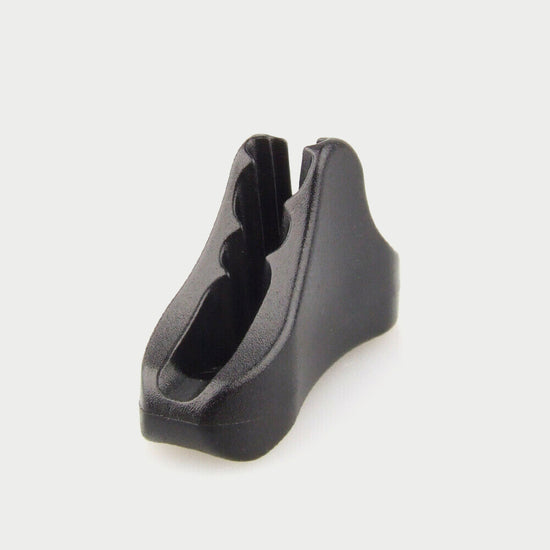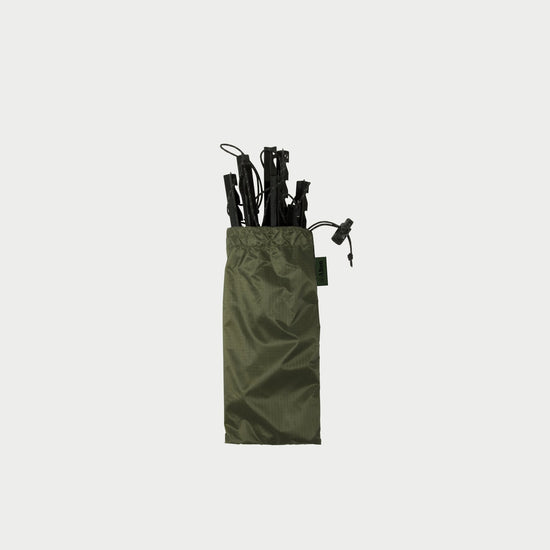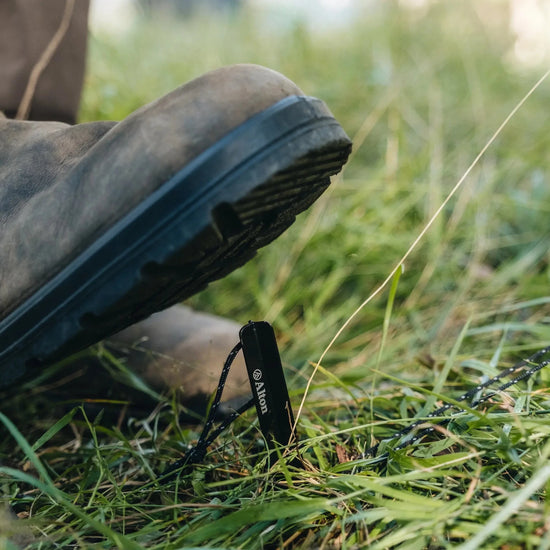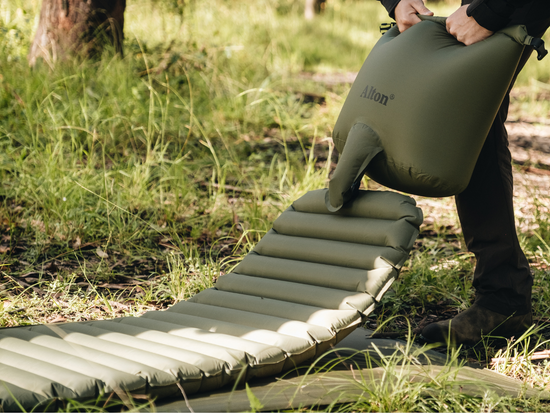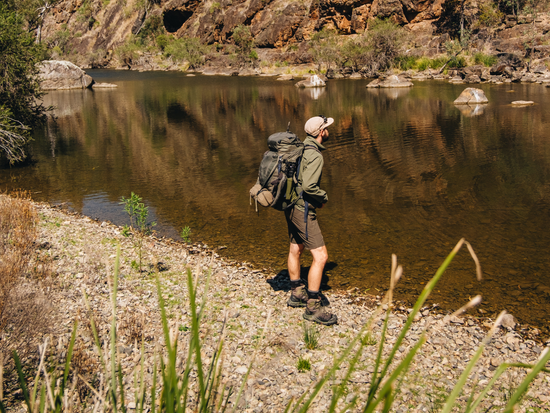Tarp camping is all about going back to basics to create a minimalist shelter without compromising on protection and functionality. But, while you don’t need much for tarp camping, what you do take can significantly impact your outdoor experience – for better or worse.
In this guide, we’ll walk you through all the essential tarp camping gear, as well as the optional extras that you might want to consider taking along. Finally, we’ll share a couple of ‘case studies’ so you can see some real-world examples of the gear we take on our tarp camping adventures.
Our Tarp Camping Gear Checklist
Here is the essential tarp camping gear we recommend taking on every trip, as well as the condition and setup dependent additions that you should consider:
Essential Tarp Camping Gear
- Camping Tarp
- Guylines with Micro Line Locks
- Ultralight Pegs
- Ridgeline with Prusiks
- Supports (eg. hiking poles, sticks or tarp pole)
- Carabiners
- Groundsheet
- Bug Net
- Shelter (eg. swag, bivvy or tent)
We recommend investing in high-quality, reliable equipment that is made with durability and functionality in mind. It will last longer, be more effective and make your tarp camping adventures more enjoyable overall.

Camping Tarp Gear Explained
We love a good checklist as much as the next person, but to really understand what tarp camping gear you might need on your adventures we need to unpack these items in more detail.
Camping Tarp
The ideal camping tarp will be lightweight yet durable, large enough to cover you and your gear and include enough tie-out points for multiple setup configurations. Tarps come in various shapes and sizes, including square, rectangular and hexagonal. Each of these shapes have their own advantages, but square and rectangular are considered to be the most versatile.
Guylines
Guylines are used to secure the corners of your tarp shelter in place, either by tying them off to other anchor points or staking them into the ground. Typically 2-3m long, guylines are made from thin, low-stretch rope, such as 2mm Dyneema® Hardcord. The exact number of guylines required will vary depending on the specific tarp shelter configuration, but as a general rule you’ll need at least four guylines – one for each outer corner of the tarp.
Micro Line Locks
Micro line locks, also known as mini line tensioners or cord tensioners, make it much easier to effectively tension the guylines of your camping tarp shelter. While knots like the taut-line hitch can be used for tensioning guylines, micro line locks significantly speed up the setup and pack down process and can hold tension reliably without loosening over time.
Pegs
Pegs, also called camping stakes, tent stakes or tent pegs, go hand in hand with guylines to form a core component of your tarp camping shelter setup. You can use them to stake the guylines into ground or secure the edges of the tarp flush against the ground.
Ridgeline
The ridgeline is the backbone of many basic tarp camping shelters, including A-Frame, Lean-To and C-Fly setups. To create a ridgeline, you’ll need a length of high-strength, low-stretch cordage, such as 550 Paracord, that is at least twice as long as your tarp. Secure the ridgeline between two anchor points, such as trees, rocks or hiking poles, to form the apex of your tarp shelter.
Carabiners
Carabiners come in handy for a variety of purposes for tarp camping. They can be used to tension ridgelines or guylines; to hang gear from ridgelines or inside your tarp shelter; or, you can use a carabiner as a central connection point if you need to attach multiple guylines or cords to a single anchor point on your tarp.
Prusiks
Prusiks, also called Prusik Loops, are an essential tool for tarp camping. A Prusik is a simple friction hitch knot made from a loop of cordage that grips onto your ridgeline when tension is applied. When slack, the prusik can be easily slid along the ridgeline to adjust the position of the tarp. Then, as you increase the tension to hold the walls of your tarp taut, the friction will hold the Prusik knot (and your tarp) securely in place.
Supports
A ‘support’ is any item used to hold your tarp up. You can use any pole-like item as a support, whether that is hiking poles or a solid stick or even a bicycle, to build a variety of effective camping tarp shelters.
In forested areas, you can easily find suitable sticks on location – or just go for a setup that doesn’t require additional supports such as A-Frame or Diamond camping tarp shelter. But, in areas with limited access to trees or other anchor points, hiking poles or a purpose-built ‘tarp pole’ might be necessary.
Groundsheet
An ultralight groundsheet can be used to create a waterproof floor for your tarp camping shelter. Depending on your setup configuration, you can fold part of the tarp underneath you to serve the same function, but this can limit your setup options.
Bug Net
A bug net isn’t always going to be necessary, but in some locations it will be an absolute must if you want to have an enjoyable tarp camping experience. A lightweight mosquito net can provide some protection against creepy crawlies, but a mesh tent, such as our Ultralight Bug Net Tent may be a better option in warm climates where insects are at their worst.
Extra Shelter
Many people opt to use their camping tarp with some form of extra shelter, such as a lightweight swag, bivvy or even a tent. In wet, windy or snowy weather conditions, we often use our Walkabout Swag along with our Hoochie tarp for extra warmth and protection.
Camping Tarp Shelter Case Studies
Ok, now for the fun part! Let’s take a look at a couple specific camping tarp setup scenarios so that you can see our tarp camping gear lists in practice.
A-Frame Tarp Shelter with a High Ridgeline
The trusty A-Frame is hands-down the most iconic camping tarp shelter out there and makes the ideal starting point for anyone new to tarp camping. To build an A-Frame shelter with a high ridgeline, you’ll need access to two solid trees to act as anchor points. So, what would we pack if we were planning to set up this A-Frame tarp configuration?
- 3m x 3m Ultralight Tarp
- 4 × 2.5m Dyneema® Hardcord Guylines with micro line locks attached
- 1 × 10m 550 Paracord Ridgeline
- 2x 25cm Dyneema® Hardcord Prusiks
- 4 × Ultralight 7001 Aluminium Pegs
- 2x Ultralight Aluminium Carabiners (for gear storage)
- Ultralight Groundsheet
- Bug Net or Bivvy (if required)
Tarp Tent with a Hiking Pole Support
The Tarp Tent setup is one of the more advanced tarp camping configurations, but don’t let that put you off – you’ll get the hang of it in no time. This protective shelter is perfect for unpredictable weather or in locations where it isn’t possible to use a ridgeline, such as exposed alpine areas without trees. What do we pack for this camping tarp shelter configuration?
- 3m x 3m Ultralight Tarp
- 3 × 2.5m Dyneema® Hardcord Guylines with micro line locks attached
- 1 × Ultralight Hiking Pole (a stick or tarp pole would also work)
- 9 × Ultralight 7001 Aluminium Pegs
- Ultralight Groundsheet
The exact gear you’ll need for your camping tarp setup will depend on the terrain and setup configuration you choose. Always do your research ahead of time to ensure that you are adequately equipped for the conditions.
It’s time to pack your bags and try tarp camping for yourself!
One of the great things about tarp camping is that it doesn’t take much gear to create a protective shelter that you can adapt to suit the needs of each adventure. So, what are you waiting for? It’s time to get out there!
